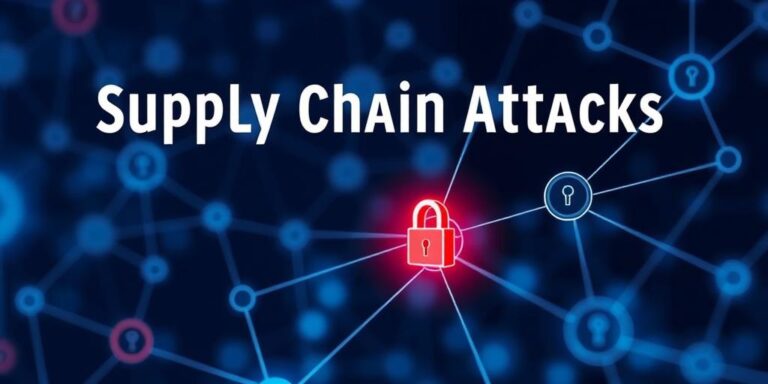Supply Chain Attacks: The Weakest Link in 2026 Security
In the ever-evolving landscape of cybersecurity, supply chain attacks are emerging as a critical threat. By 2026, their sophistication and frequency are projected to make them the weakest link in overall security strategies. This article delves into why supply chain attacks pose such a significant risk and what measures organizations can take to mitigate them.
What are Supply Chain Attacks?
A supply chain attack occurs when a cybercriminal infiltrates a system through a third-party vendor or supplier. These attacks exploit vulnerabilities in the software, hardware, or services that an organization relies on. By compromising a single point in the supply chain, attackers can gain access to numerous downstream targets, making these attacks highly efficient and impactful.
Why Supply Chain Attacks are a Growing Threat
- Increased Complexity: Modern supply chains are incredibly complex, involving numerous vendors and intricate dependencies. This complexity creates multiple entry points for attackers.
- Trust Relationships: Organizations often trust their suppliers, which can lead to a lack of rigorous security oversight. Attackers exploit this trust to gain unauthorized access.
- Software Vulnerabilities: Many supply chain attacks target vulnerabilities in widely used software. Once a vulnerability is identified and exploited in one vendor, it can be replicated across many others.
- Lack of Visibility: Organizations often lack complete visibility into their supply chain’s security practices. This makes it difficult to detect and respond to potential threats.
Real-World Examples
Several high-profile supply chain attacks have demonstrated the potential damage:
- SolarWinds: In 2020, attackers compromised SolarWinds’ Orion software, affecting thousands of organizations, including U.S. government agencies.
- Kaseya: In 2021, a ransomware attack through Kaseya’s VSA software impacted hundreds of businesses worldwide.
- Codecov: In 2021, attackers modified the Codecov Bash Uploader script, allowing them to steal credentials and access sensitive data.
Mitigating Supply Chain Attacks: Best Practices
To strengthen your organization’s defenses against supply chain attacks, consider the following best practices:
-
Vendor Risk Management:
- Conduct thorough security assessments of all vendors.
- Implement a risk-based approach to vendor management.
- Establish clear security requirements and expectations in contracts.
-
Supply Chain Visibility:
- Map your supply chain to identify critical dependencies.
- Monitor vendor security practices continuously.
- Use threat intelligence to stay informed about potential risks.
-
Security Audits and Assessments:
- Regularly audit vendors to ensure compliance with security standards.
- Conduct penetration testing to identify vulnerabilities.
- Review incident response plans to ensure they cover supply chain attacks.
-
Software Bill of Materials (SBOM):
- Implement SBOM to track software components and dependencies.
- Use SBOM to identify and mitigate vulnerabilities in third-party software.
-
Incident Response Planning:
- Develop a comprehensive incident response plan that includes supply chain attacks.
- Regularly test and update the plan.
- Ensure that the incident response team is trained to handle supply chain incidents.
The Future of Supply Chain Security
As supply chain attacks continue to evolve, organizations must adapt their security strategies to stay ahead of emerging threats. By 2026, expect to see greater emphasis on:
- AI and Automation: Using AI and automation to improve threat detection and response.
- Zero Trust Architecture: Implementing zero trust principles to minimize the impact of supply chain breaches.
- Cybersecurity Standards: Adoption of standardized cybersecurity frameworks to ensure consistent security practices across the supply chain.
Conclusion
Supply chain attacks represent a significant and growing threat to organizations worldwide. By understanding the risks and implementing robust security measures, businesses can strengthen their defenses and protect themselves from becoming the next victim. Prioritizing supply chain security is no longer optional but a necessity in today’s interconnected digital landscape.




